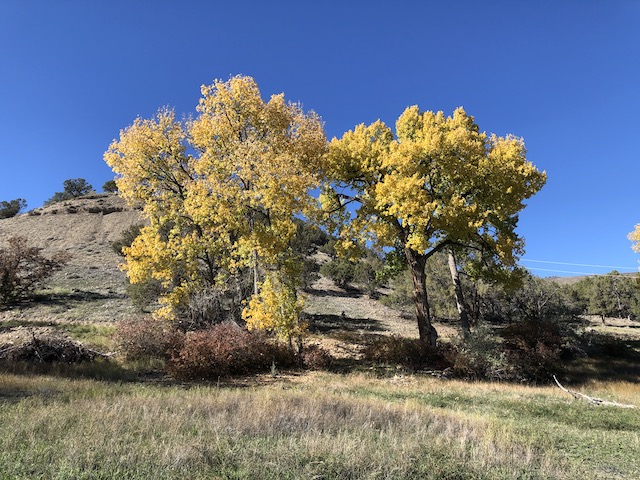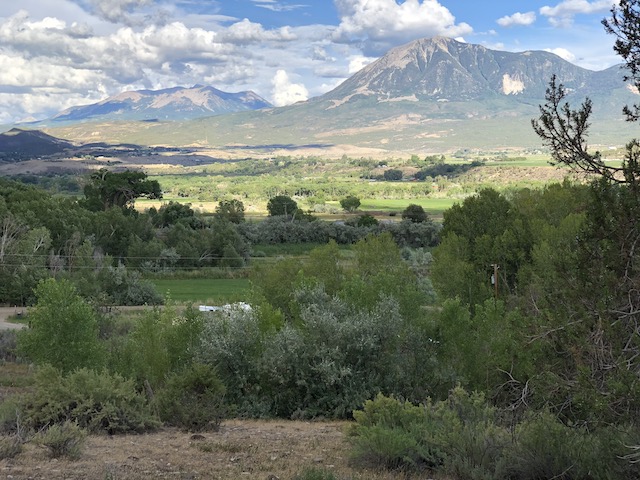
living with the Land
Our intention when we moved to the North Fork Valley was not to live “off the land” but closely with it. Though my life experiences were city-based, my heartbeat was country. My father’s family were farmers in rural NE Texas. They truly lived off the land. With little money, they provided for themselves and bartered for much of their subsistence. I spent many days on the farm as a kid. Years of city living never removed the country from my dad as he raised me. The country’s influence rubbed off. I’ve always been an avid gardener and a creator of outdoor spaces.
Our move to the valley and 14 acres, was a dream come true. As part of my life encore, I’d have new experiences, and learn lessons. The property wears several faces, from semi-arid to wetland flora. Oriented as two properties, there is a larger area near the valley floor, and a smaller portion 200′ higher along the edge of Sunshine Mesa. A postage stamp on an envelope well illustrates the context and relationship between the two.
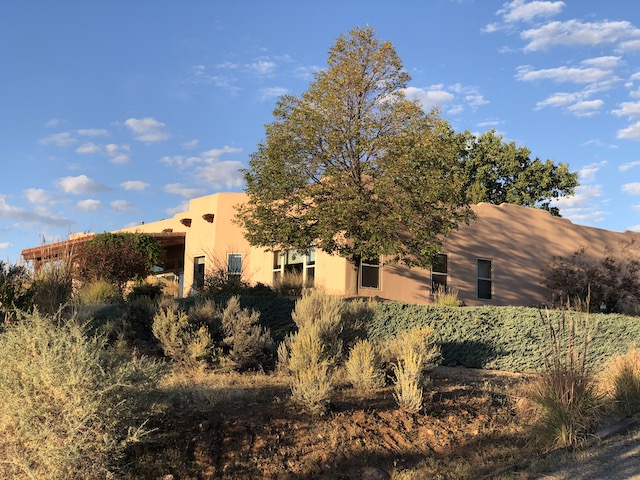

The “postage stamp” on the hill has sweeping views across the valley towards the West Elk mountains. The area contains our home, a detached garage we call the shop, a cultivated arid landscape surrounding the house, and a small plot of grass in front. That was it, except for an open uncultivated area to the west and south of the shop. As it turns out, a great location for a small vineyard due to a slight southerly slope with good sun exposure. Another plus to the location, the shop contains our property’s water system with a 1,500-gallon cistern.
With vineyard placement determined and grape rootstock planted, we constructed a wildlife fence. Upon completion, we recognized the potential of transforming the site’s inner space into a planted haven. With accessible water for drip irrigation, planting options were an open book. To date, I’ve built seven above-ground garden beds, put out numerous plant containers, planted roses at the end of several grapevine rows (a European tradition), and built a seating area.
While water availability is good, it’s not unlimited on our postage stamp. Water limits tie to a solar pump, which pushes spring water uphill to the cistern. On average, 1.25 gallons per minute, 75 gallons an hour, and 600 gallons in eight hours. This slow rate mandates the use of efficient water irrigation approaches, where drip application is king. In organizing several drip zones across the vineyard and planting beds, I can match the level of water being applied, to what comes in. A great outcome for a limited resource!
The lower envelope of the property is wild and lovely, with lots of space. The section has an abundance of cottonwoods, junipers, willows, sagebrush, wild apricot trees, roses and flowers, cacti, long grasses, and assorted weeds. When scrounging around the acreage, especially among the trees and brush, it’s not uncommon to rouse deer or come across a flock of turkeys. One aspect selling us on the property early on, was the existence of an above-ground flowing spring. We have excellent water rights and the spring is just plain beautiful, not unlike a bubbling brook.
Late in the summer our first year, I found wild asparagus. Once one patch was identified, I began finding more. Twenty in all. I staked the patches for easy spring identification. The tender heads can be challenging to spot as they begin pushing up through the soil. The asparagus when harvested is so tender, you hardly need to cook it.
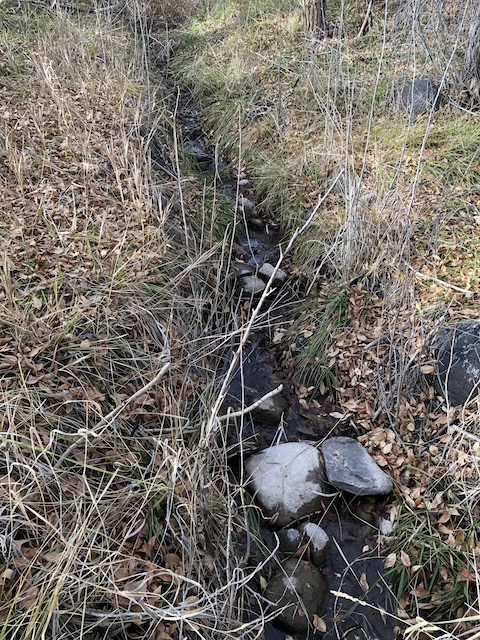
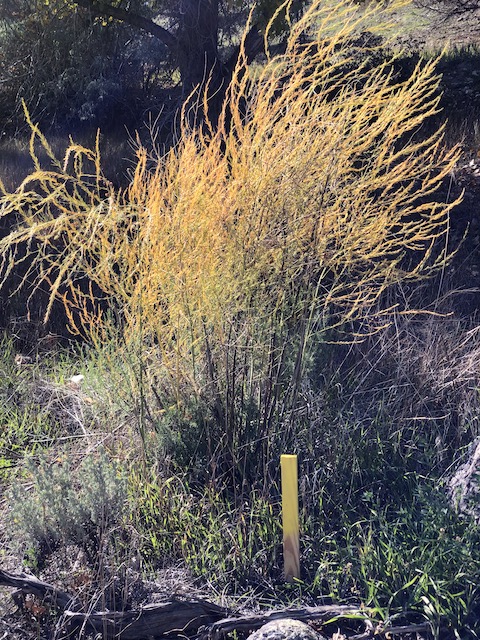
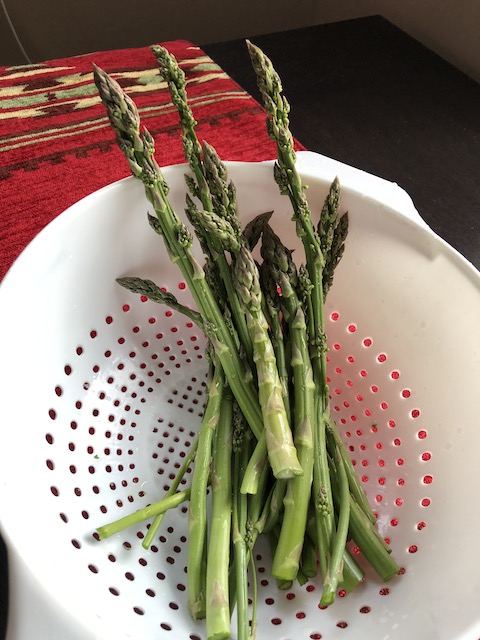
We have lingering questions about what to do with the lower property if anything. We’ve casually considered several possibilities. Several examples include: cutting away brush and willows from the spring, making it more accessible; providing a seating area along the spring, maybe a little campsite; or channeling a portion of the spring to a lower area of the site, and removing enough soil to provide a pond (I love to terraform). Planting a vineyard is also an option but another approach is required than I pursued on the mesa. Several possibilities, and many opportunities.
Wildlife encounters are part of living with the land. A topic easily covered by an entire blog. There is an encounter we hadn’t expected, Pack Rats. Believe it or not, they’re cute, with furry ears and tails. They earn their name honestly. The rats scavenge vegetation from a raised herb garden adjacent to the patio and build nests behind the cushions of the patio couch. They’ll also supplement their nests with couch cushion stuffing. We love our patio couch. The rats must learn to nest elsewhere. I refuse to use poison. Ingested, it can be passed to rat predators, not good. I ended up using traps, they work!
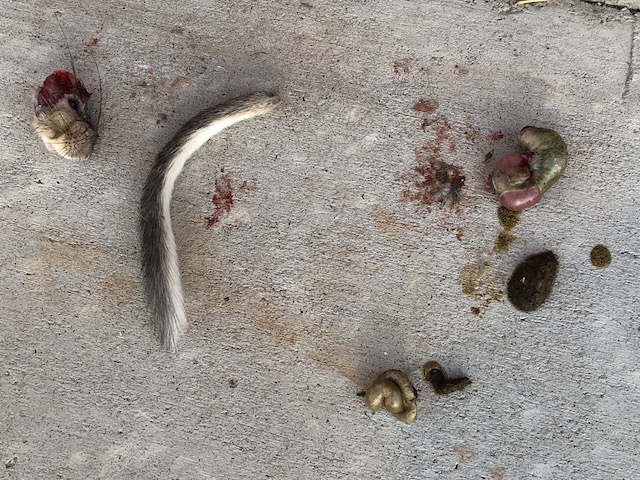
Owls are common. You can’t help but admire their beauty and tenacity when pursuing rats. One morning when coming out to the shop, I came across a sight like no other. A precise surgical dissection of a Pack Rat, courtesy of an owl more than likely. The perpetrator had no use for the remaining body parts, from the head to the tail. Amazingly, each part was laid out like discrete paint strokes on a blank canvas.
Bobcats are another common predator. Our site cameras pick them up from time to time. One morning, as my son-in-law was enjoying a cup of coffee on the valley overlook with his son in his lap, a bobcat sauntered by. The jolt removed the need for additional caffeine that morning!
There is one thing we’ve learned living with the land in the valley. Expect the unexpected. It’s fun. There are always new things to learn and experience. Nature is unpredictable. We’ve also learned to be safe, in the “don’t poke a bear” category. I believe we’ll continue to abide by that!
